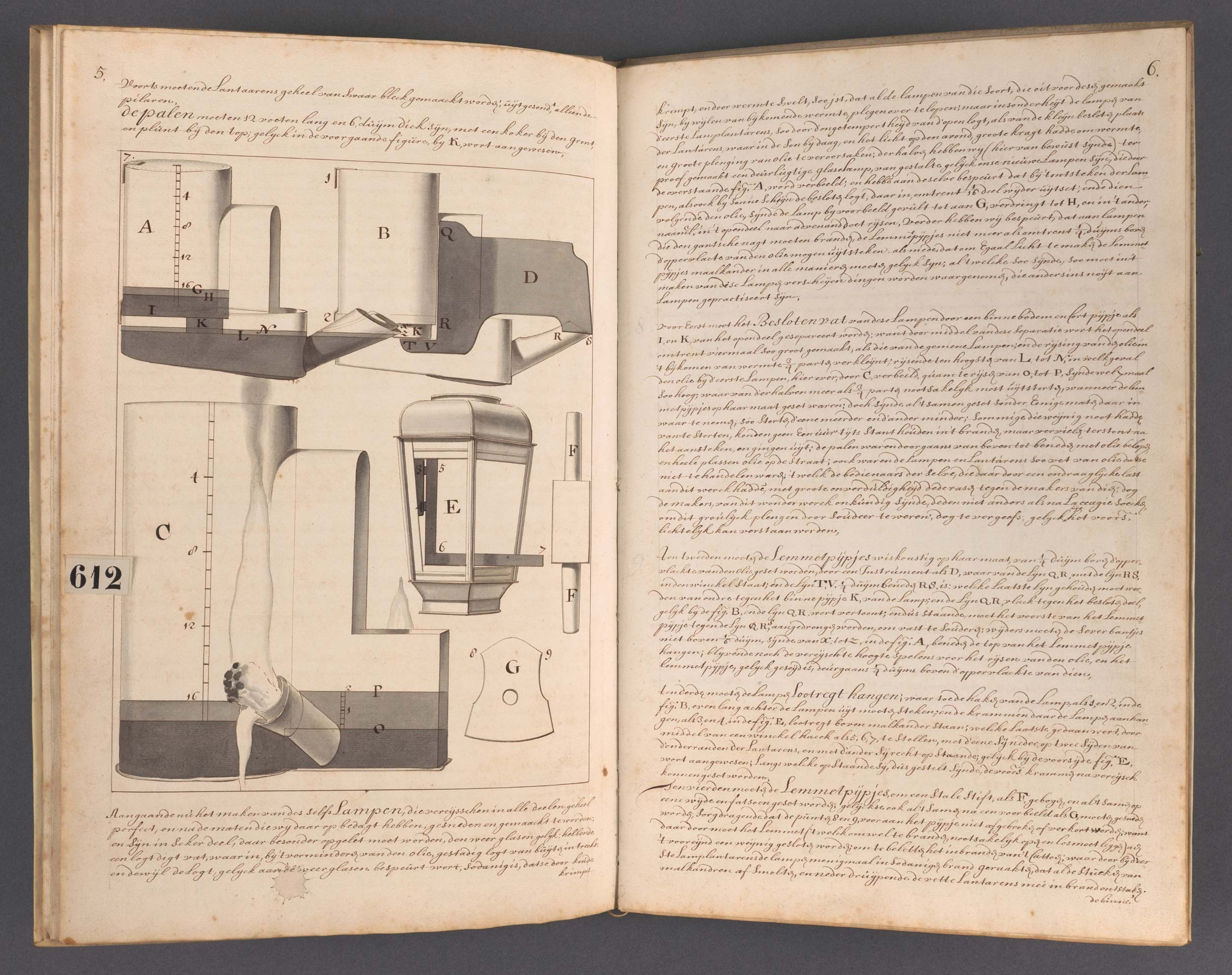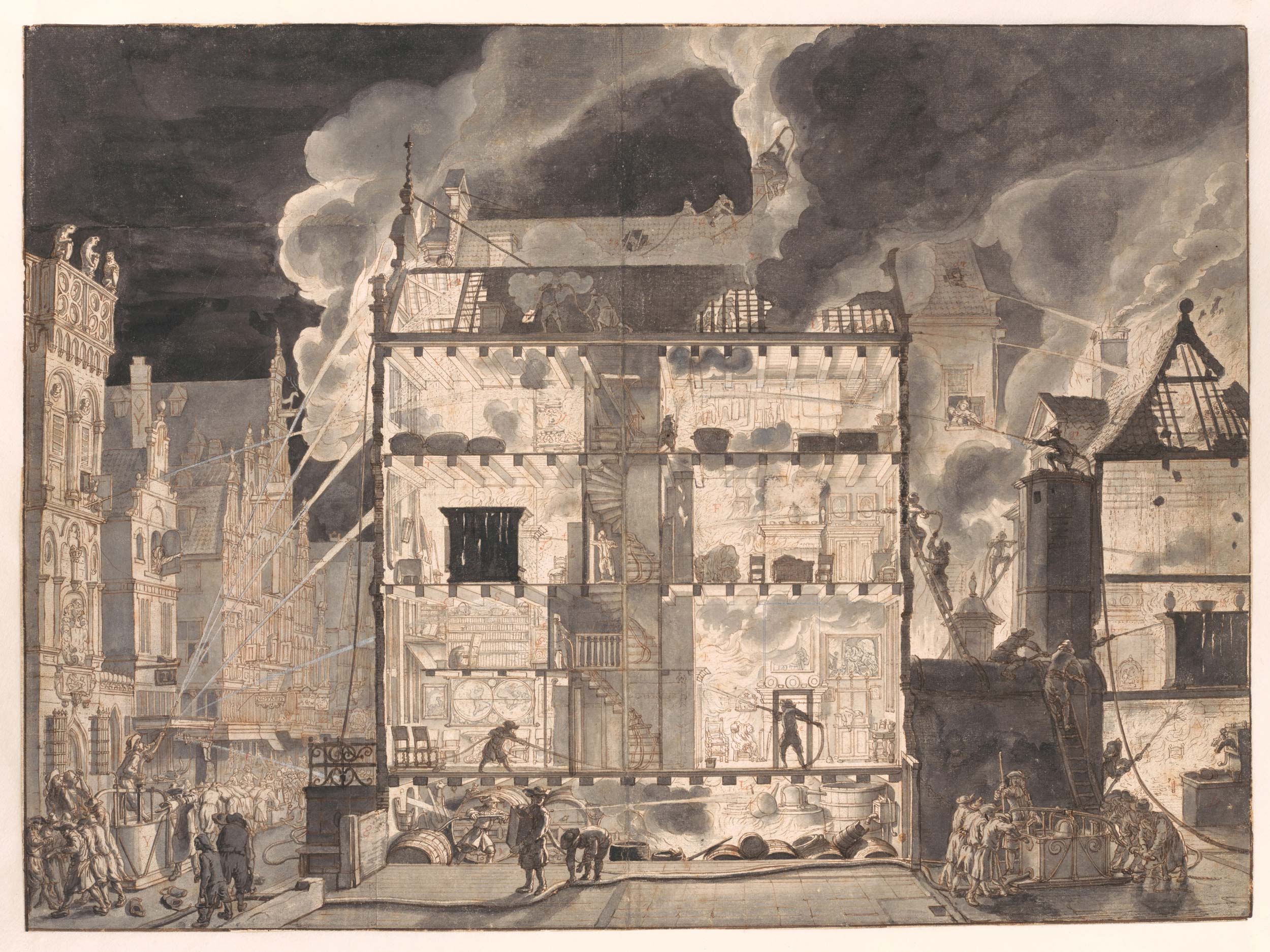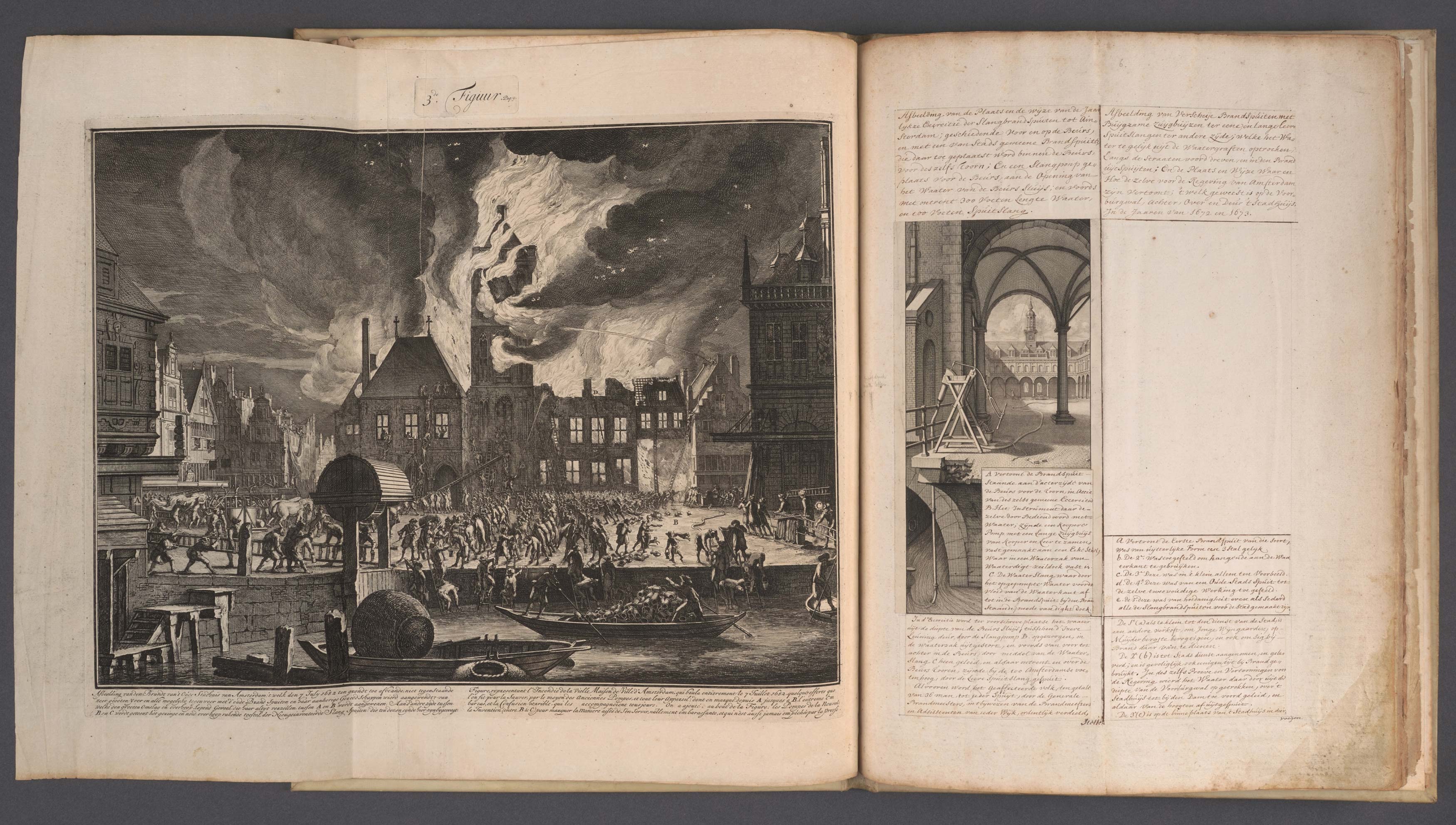The Amsterdam City Archives announced that a large collection of drawings, manuscripts, printed publications and objects preserved for centuries by descendants of Jan van der Heyden (1637-1712) has been acquired by the city of Amsterdam. Contributions from both public and private funders have ensured that this unique collection will be kept in the Netherlands and made accessible to the public at large. The Amsterdam Museum will house the three-dimensional objects and the Amsterdam City Archives will acquire and conserve the works on paper.
On 3 July 1669, Amsterdam’s city councilors agreed to a proposal made by Jan van der Heyden to install 2,556 streetlamps in the city. Thanks to improvements in street lighting, Amsterdam became Europe’s city of light in the late seventeenth century. Inventor, artist and entrepreneur Jan van der Heyden (1637-1712) was the spiritual father of this street lighting and of a revolutionary new fire hose. The contributions Jan van der Heyden and his family members made to many seventeenth-century inventions came about in close collaboration with Amsterdam city council.

Jan van der Heyden (1637-1712), ‘t Licht der Lamplantaarens ontsteken door Jan van der Heijde Inventeur der selve en opsigter der Stadslantaarens van Amsterdam (Illustrated manuscript on the improved street lightning), 1679
Amsterdam City Archives
A few years after the streetlamps were installed, Van der Heyden developed a revolutionary new fire hose and improved the organisation of the fire brigade. This meant that fires were under control more quickly, which prevented fires from spreading. Thus, it is quite possible that we owe the survival of large portions of the Amsterdam’s historic center to Van der Heyden. Moreover, Van der Heyden was an outstanding painter and entrepreneur who issued his drawings and prints to publicize his inventions to a wider public.

Jan van der Heyden (1637-1712), Cross-section of a burning house with firefighters, ca. 1690, Amsterdam City Archives
Design for the second print published in Beschryving der nieuwlyks uitgevonden en geotrojeerde slang-brand-spuiten 1690 (Description of the recently invented and patented hose fire engine’).
Bert de Vries, Director of the Amsterdam City Archives: “The importance of this collection cannot be overestimated. The inventions of Jan van der Heyden, the ‘Da Vinci of the Low Countries’, were imitated all over the world, and his artworks still enjoy the full interest of the international community. We are enormously proud that this collection has been entrusted to us for conservation and presentation”.

Jan van der Heyden (1637-1712), Continuation of the Description of the recently invented and patented hose fire engine , ca. 1695. Manuscript with mounted prints and one drawing, Amsterdam City Archives
